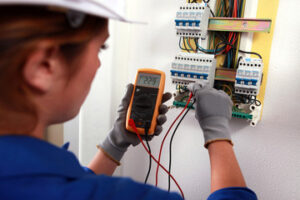Insulation Removal is a complex project that requires thorough inspection and planning. This includes identifying the type of insulation present, as each material needs a different removal method. It also involves inspecting for moisture damage, pest infestation, and other issues affecting the project’s safety.
A good plan also ensures a safe and efficient removal process. It involves the right equipment, including a powerful insulation removal vacuum and a sturdy ladder. Click https://www.perthinsulationremover.com.au/ to learn more.

Depending on the size of your attic and the type of insulation, it can cost several hundred dollars up to $1,000 for the entire removal and disposal process. This includes purchasing or renting the right equipment, including a heavy-duty shop vac and large bags to put the insulation in. You will also need to factor in the value of your time and the time of anyone who helps you. If you decide to take on the project yourself, consider the costs of buying or renting the necessary equipment and determining how much your time is worth.
If your home has blown-in cellulose or fiberglass insulation, the removal process is more labor intensive than with batt and roll insulation. These types of insulation are blown into your attic by hand, which requires a lot of physical effort and isn’t a good idea for people with back problems or respiratory issues. Instead, professional insulation contractors use a high-powered vacuum machine that sucks the old insulation into garbage bags. This process is significantly quicker and more efficient than manual removal.
Before beginning the removal process, check your attic for signs of mold or water damage that could lead to health hazards. Moisture and mold can cause the insulation to become compromised, which can affect indoor air quality and lead to a host of other problems.
When removing blown-in insulation, it’s important to wear a dust mask and protective gear. This will help prevent the inhalation of dangerous fibers and can save you a lot of trouble down the road. The most common types of blown-in insulation are fiberglass and rock wool, which can release carcinogens into the air that can damage your eyes, skin, and respiratory system.
It takes between four and eight hours to prep, remove, and clean up an attic that has blown-in cellulose or fiberglass. It’s best to do this over a few days and possibly even over a weekend, if possible. It’s also a good idea to take breaks every 15 minutes or so and stop work when your body temperature begins to rise.
Safety
In addition to improving a home’s energy efficiency, proper insulation provides a safe and comfortable living environment. It reduces the concentration of dust, allergens, and mold spores. It also helps control humidity levels. Addressing problems such as a lack of ventilation or outdated materials promptly can help avoid costly repairs and renovations in the future. It’s important to understand when and how to remove old or damaged insulation, as well as the best options for replacement.
Before starting the insulation removal process, it’s essential to take the necessary precautions to protect yourself from dangerous debris and prevent health risks. This includes wearing personal protective equipment and following safety guidelines. It’s also important to clear the work area of any furniture or boxes before attempting to remove insulation. This will create space for a smoother and more efficient removal process. In addition, it can prevent damage to items stored in the attic or other areas of the home.
Insulation removal can be done by hand or with a machine, but both methods require careful planning and preparation to ensure safety. To minimize the risk of injury, it is recommended to wear gloves and a respirator mask to protect yourself from fibers and toxins. A face shield is also useful, as it will protect your eyes from dust and irritants.
A high-powered insulation removal vacuum is the most effective tool for removing blown in insulation. This tool will suck up the old insulation, eliminating the need to roll it up or dispose of it by hand. It’s important to select a vacuum with a hose long enough to reach the attic and to use heavy-duty waste bags to contain the contaminated material.
It’s also important to turn off or disconnect any live wires in the attic before starting the removal process. This will eliminate the risk of electrical shock or fire. It’s also a good idea to wear a hard hat and to cover any items that are stored in the attic with plastic sheeting to protect them from accidental contact.
Blown in insulation, also known as loose fill insulation, is more difficult to remove than batting. It’s important to choose a professional with the right tools and knowledge of how to handle this material safely. In addition, the professionals will have the experience to navigate compact spaces and avoid damaging the drywall or ceilings.
Preparation
Before insulation removal begins, it is important to take the time to properly prepare the work area. This includes sealing off the workspace, clearing any obstacles and identifying potential hazards like pests or mold. It also involves determining the type of insulation present, as different types require different approaches.
Insulation is typically installed in attics, walls and crawl spaces to help regulate indoor temperatures and reduce noise. It can be installed in various forms, including fiberglass batts, cellulose or foam. Some forms are more effective than others, but it’s important to consider the environmental impact of each option before making a decision.
Water damage, contaminated or damaged insulation can lead to health risks, energy inefficiencies, and high utility bills. This is especially true in older homes with deteriorating or outdated insulation. Insulation replacement can help homeowners save money and improve their home’s comfort and value.
Aside from reducing energy costs, upgrading insulation can reduce moisture buildup and prevent harmful bacteria and allergens from growing in the attic space. In addition, it can lower the risk of fire damage and mold growth.
Choosing a professional insulation company is essential to ensure that the job is done correctly. Look for companies with experience, positive customer feedback, and a clean work record. You should also ask for references and a portfolio of past projects. This will help you determine whether the company is a good fit for your project.
Before beginning the insulation removal process, you should wear protective gear such as gloves, a mask, and safety goggles. This will protect you from the fibers and dust that can irritate your eyes, skin, and respiratory system. It’s also a good idea to wear long pants and sleeves, as it can be a messy job.
Once the old insulation is removed, it must be disposed of in accordance with local laws and regulations. Most reputable insulation removal services follow guidelines for environmentally friendly disposal, which helps to prevent contamination and pollution. This is an important step in the removal process, as improper disposal of asbestos and other hazardous materials can lead to costly fines for the property owner.
Disposal
Whether you are replacing old insulation or installing new blown-in insulation, it is essential to create a removal plan. This will help ensure that the process is safe, efficient, and cost-effective. You will also need to identify and assess any potential hazards. The removal process can be done by hand or machine, depending on the type of insulation and conditions.
You should use personal protective equipment (PPE) when removing insulation, including gloves, masks, and goggles. The insulation may contain harmful particles that can be inhaled or ingested. It is also recommended that you open windows or use fans to improve ventilation in the workspace. This will help disperse harmful particles and reduce fatigue, allowing you to complete the project safely.
It is also important to check local regulations regarding the disposal of insulation. This information will help you avoid illegal or hazardous disposal practices that could have serious environmental consequences. Choosing a professional insulation removal service will ensure that the disposal process is handled according to local regulations. You can find reputable companies by searching online reviews or requesting referrals from friends or neighbors. Ensure that the company you choose specializes in different types of insulation, as well as other services such as rodent proofing and attic cleaning.
Before you start the insulation removal process, make sure to turn off or disconnect any electrical systems in your attic. Working around live wires can result in short circuits or damage to your home’s wiring. This can cause major problems and costly repairs.
Once you have prepared your workspace and assembled all necessary equipment, begin the process of removing blown-in insulation. Climb into your attic and activate the vacuum system. Use a rake to break up clumps and transfer them to a dustpan or garbage bag. You should also make sure that the vaccum has a strong seal to prevent the escape of unhealthy particles into your house. Once you have finished removing the insulation, contact your waste management company for guidelines on how to dispose of it. You may be able to recycle it, which is an eco-friendly and cost-effective option.


